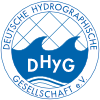High-resolution, topobathymetric LiDAR coastal zone characterisation
Coastal and tidal environments are valuable ecosystems, which, however, are under pressure in many areas around the world due to globalisation and/or climate change. Detailed mapping of these environments is required in order to manage the coastal zone in a sustainable way. However, historically these transition zones between land and water are difficult or even impossible to map and investigate in high spatial resolution due to the challenging environmental conditions. The new generation of airborne topobathymetric light detection and ranging (LiDAR) potentially enables full-coverage and high-resolution mapping of these land-water transition zones. We have carried out topobathymetric LiDAR surveys in the Knudedyb tidal inlet system in the Danish Wadden Sea and the R.dsand lagoon connected to Fehmarnbelt. Here, we present the preliminary results of these two surveys which were carried out at two locations with different environmental settings. We demonstrate the potential of using airborne topobathymetric LiDAR for seamless mapping of land-water transition zones in challenging coastal environments, e.g. in an environment with high water column turbidity and continuously varying water levels due to tides as well as in an environment characterised by a very heterogeneous surface sediment composition.
topobathymetry | LiDAR | coastal zone | HydroVISH | point cloud classification


